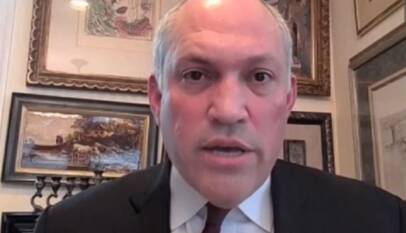Trade Tensions Escalate: China Strikes Back with 34% Tariff on All U.S. Imports
In a powerful retaliatory move, China announced it will impose a 34% tariff on all U.S. imports, effective next week. The announcement, made Friday, is Beijing’s sharpest response yet to U.S. President Donald Trump’s sweeping tariff hikes on Chinese goods—signaling a significant escalation in the ongoing trade war between the world’s two largest economies.
The move mirrors Trump’s own recent decision to increase tariffs on Chinese imports to the same 34% level. His administration had previously imposed two rounds of 10% tariffs in February and March, citing China’s alleged involvement in the fentanyl crisis. Friday’s announcement by China sent immediate shockwaves through global markets, with the U.S. stock market plunging amid rising fears of a full-scale trade war.
China’s Arsenal: Rare Earths, WTO Lawsuit, and Corporate Crackdown
Beijing’s retaliation is not limited to tariffs. The Chinese Ministry of Commerce revealed a series of additional countermeasures aimed squarely at U.S. interests. Among the most notable is the expansion of export controls on rare earth elements—materials vital for modern technologies including semiconductors, electric vehicles, and defense systems. The list includes samarium, used in aerospace and military manufacturing, and gadolinium, used in medical imaging.
China also filed a formal lawsuit at the World Trade Organization (WTO), accusing the U.S. of violating global trade rules and engaging in unilateral economic aggression. The ministry labeled the Trump administration’s tariff hike a “typical bullying tactic” that endangers the multilateral trading system.
Additionally, China suspended imports of U.S. sorghum, poultry, and bonemeal from six American companies, citing contamination concerns ranging from mold to banned antibiotics and salmonella.
Crackdown on U.S. Companies Operating in China
Beijing tightened the screws further by adding 27 U.S. companies to various trade restriction lists. Sixteen firms, including defense contractor High Point Aerotechnologies and logistics giant Universal Logistics Holdings, were placed under new export control measures for dual-use goods.
An additional eleven American firms were listed as “unreliable entities,” effectively blacklisting them from Chinese markets. This includes prominent drone manufacturers Skydio and BRINC Drones, now barred from conducting import-export operations or making new investments in China.
China also launched an anti-monopoly investigation into DuPont China Group Co., a subsidiary of the multinational chemical giant, adding further pressure on American business interests in the region.
Trump Responds—And Leaves Door Open on TikTok
Despite the heavy escalation, Trump struck a more conciliatory tone on social media, hinting at continued openness to negotiations with Beijing. “We hope to continue working in Good Faith with China, who I understand are not very happy about our Reciprocal Tariffs,” he posted.
He also addressed the uncertain future of TikTok, the Chinese-owned social media giant. While Beijing recently paused its negotiations with U.S. stakeholders following the tariff increase, Trump announced an extension of the divestment deadline by 75 days, leaving room for a potential deal.
Analysts: “From Scalpel to Sword”
Experts say China’s response marks a significant shift in strategy. Gabriel Wildau, managing director at the consultancy Teneo, noted that Beijing’s retaliation is “noticeably less restrained” than previous rounds of tariffs—signaling waning hopes for a near-term trade deal with the U.S.
Craig Singleton, senior fellow at the Foundation for Defense of Democracies, said, “If China’s previous responses were scalpels, this time it drew a sword.” He added, “China’s new tariffs stop short of a full-blown trade war, but this blow-for-blow strategy makes it clear Xi Jinping won’t yield under pressure.”
However, Singleton warned that the increasing intensity leaves little space for diplomacy. “The longer this drags, the harder it becomes for either side to deescalate without losing face,” he said.
Earlier Rounds Set the Stage
Beijing’s earlier retaliatory measures were relatively moderate. In February, after Trump’s initial tariff hike, China levied a 15% tariff on U.S. coal and liquefied natural gas, and a 10% tariff on crude oil and heavy machinery. In March, China imposed up to 15% tariffs on agricultural products, including pork, beef, soy, and poultry—still leaving the door open for negotiation.
But Friday’s escalation closes that window, at least for now. With dozens of American companies now restricted, and Chinese firms also under heavy scrutiny in the U.S., the trade standoff shows no signs of easing.
Tensions Simmer Despite Military Talks
Interestingly, amid the economic tit-for-tat, military officials from both countries met in Shanghai for the first time since Trump took office. The two-day talks were aimed at reducing tensions at sea and avoiding military miscalculations. Still, with the economic relationship unraveling, such dialogues may not be enough to offset the deepening rift.
Supreme Court PIL Seeks Urgent Action Over IndiGo Flight Chaos
New Delhi, Dec 2025 : A public interest litigation (PIL) has been filed in the Supreme Cou…




















